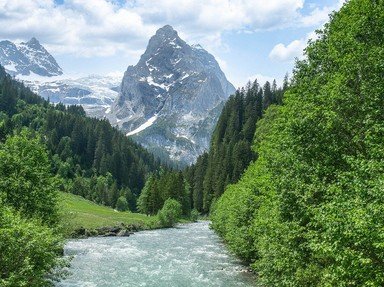Quiz Answer Key and Fun Facts
1. Many of the world's iconic volcanoes are stratovolcanoes, characterized by their steep, conical shape. What name, which might remind you of a medieval knight's protective gear, is given to another, less common type of volcano?
2. True or False? Fold mountains are the most commonly found mountains on earth.
3. What German word, meaning "mass" or "heap", is given to a raised block lying between two fault lines?
4. 'Saltation' is an erosional process associated with rivers. Which of the following short statements best describes saltation? Hint: it is probably NOT the first answer you think of!
5. What do The Wash, The Humber (both in England), Chesapeake Bay, East River and Puget Sound (all USA) have in common from the following options?
6. Canada's Lake Louise is a spectacular example of a glacial lake. What name is given to the physical 'structure' that dams water flow and creates a lake such as this one?
7. Which of the following major lakes lies in a volcanic caldera rather than in a rift valley?
8. Aeolian lakes are most frequently found in arid regions. The name gives a hint as to how these lakes form. What is the primary force creating such lakes?
9. An oxbow lake is a remnant water body formed from a nearby river. What is an oxbow lake called in Australia?
10. What do Lake Kariba, Lake Nasser and Lake Volta all have in common (apart from all being in Africa)?
Source: Author
MikeMaster99
This quiz was reviewed by FunTrivia editor
agony before going online.
Any errors found in FunTrivia content are routinely corrected through our feedback system.
